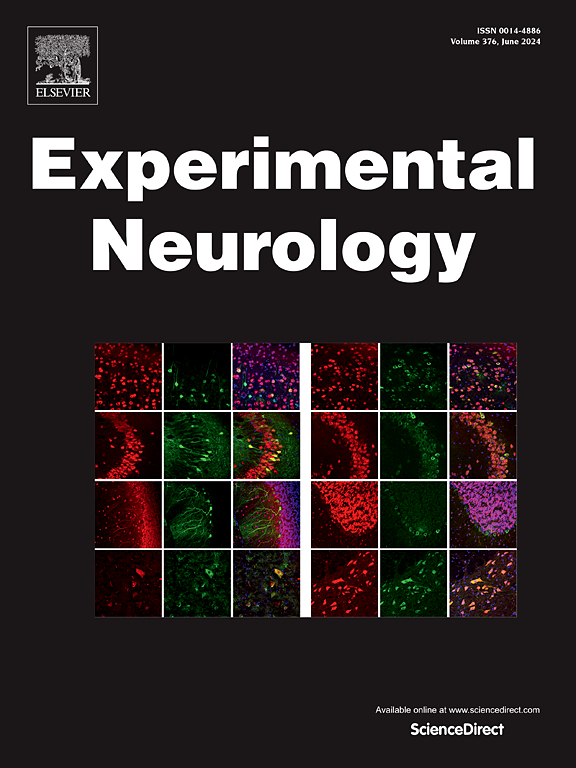4-Benzyl-2-methyl-1,2,4-thiadiazolidine-3,5-dione rescues oligodendrocytes ferroptosis leading to myelin loss and ameliorates neuronal injury facilitating memory in neonatal hypoxic-ischemic brain damage
IF 4.6
2区 医学
Q1 NEUROSCIENCES
引用次数: 0
Abstract
Neonatal brain hypoxia-ischemia (HI) is proved to cause white matter injury (WMI), which resulted in behavioral disturbance. Myelin formed by oligodendrocytes vulnerable to hypoxia-ischemia (HI), regulating motor and cognitive function, is easily damaged by HI causing myelin loss. 4-benzyl-2-methyl-1,2,4-thiadiazolidine-3,5-dione (TDZD-8) has a potential rescue role in neuronal death post HI. Studies reported that neuronal ferroptosis could be induced by HI and linked to behavioral abnormalities. However, the effect of TDZD-8 on WMI and its involvement in memory recovery remains unclear. In this study, our HIBD model showed impaired memory function caused by neuronal injury and myelin loss. TDZD-8 effectively reversed this pathology. Underlying mechanistic exploration implied that TDZD-8 ameliorating myelin loss via ferroptosis pathway was involved in the process of TDZD-8 treating neonatal HIBD. In conclusion, our data demonstrated that combined effect of white matter repairment and neuronal protection achieved the therapeutic role of TDZD-8 in neonatal HIBD, and suggested that white matter repairment also could be a considerable clinical therapy for neonatal HIBD.
4-苄基-2-甲基-1,2,4-噻二唑烷-3,5-二酮可挽救导致髓鞘脱失的少突胶质细胞铁突变,改善神经元损伤,促进新生儿缺氧缺血性脑损伤的记忆
新生儿脑缺氧缺血(HI)可引起脑白质损伤(WMI),导致行为障碍。髓磷脂是由易受缺氧缺血(HI)影响的少突胶质细胞形成的,具有调节运动和认知功能的功能,容易被缺氧损伤而导致髓磷脂丢失。4-苄基-2-甲基-1,2,4-噻二唑烷-3,5-二酮(TDZD-8)在HI后神经元死亡中具有潜在的拯救作用。研究报告神经元铁下垂可由HI引起,并与行为异常有关。然而,TDZD-8对WMI的影响及其与记忆恢复的关系尚不清楚。在本研究中,我们的HIBD模型显示由神经元损伤和髓磷脂丢失引起的记忆功能受损。TDZD-8有效地逆转了这种病理。潜在的机制探索表明,TDZD-8通过铁下沉途径改善髓磷脂损失参与了TDZD-8治疗新生儿HIBD的过程。总之,我们的数据表明,白质修复和神经元保护的联合作用实现了TDZD-8在新生儿HIBD中的治疗作用,提示白质修复也可以成为新生儿HIBD的一种重要的临床治疗方法。
本文章由计算机程序翻译,如有差异,请以英文原文为准。
求助全文
约1分钟内获得全文
求助全文
来源期刊

Experimental Neurology
医学-神经科学
CiteScore
10.10
自引率
3.80%
发文量
258
审稿时长
42 days
期刊介绍:
Experimental Neurology, a Journal of Neuroscience Research, publishes original research in neuroscience with a particular emphasis on novel findings in neural development, regeneration, plasticity and transplantation. The journal has focused on research concerning basic mechanisms underlying neurological disorders.
 求助内容:
求助内容: 应助结果提醒方式:
应助结果提醒方式:


